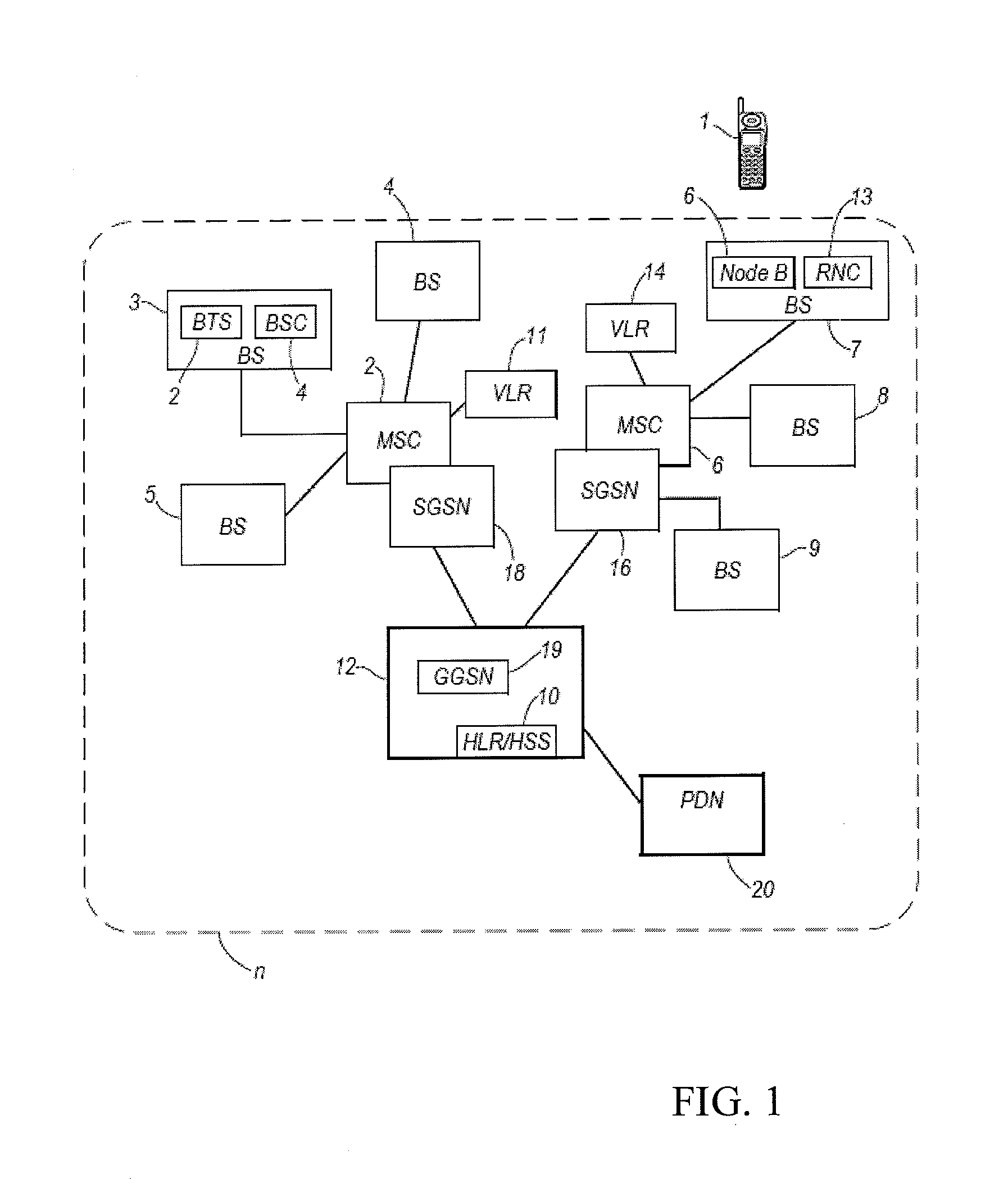Telecommunications networks
a technology of telecommunication networks and networks, applied in the field of telecommunication networks, can solve the problems of not reflecting the quality of coverage maps, difficult for customers to make informed decisions about network choice, and system not measuring network quality at the mobile devi
- Summary
- Abstract
- Description
- Claims
- Application Information
AI Technical Summary
Benefits of technology
Problems solved by technology
Method used
Image
Examples
Embodiment Construction
[0021]Key elements of a mobile telecommunications network n, and its operation, will now briefly be described with reference to FIG. 1.
[0022]Each base station (BS) corresponds to a respective cell of its cellular or mobile telecommunications network and receives calls / data from and transmits calls / data to a mobile terminal in that cell by wireless radio communication in one or both of the circuit switched or packet switched domains. Such a subscriber's mobile terminal (or User Equipment—UE) is shown at 1. The mobile terminal may be a handheld mobile telephone, a personal digital assistant (PDA), a laptop computer equipped with a datacard, or a laptop computer with an embedded chipset containing the UE's functionality.
[0023]In a GSM (2G) mobile telecommunications network, each base station subsystem 3 comprises a base transceiver station (BTS) 2 and a base station controller (BSC) 4. A BSC may control more than one BTS. The BTSs and BSCs comprise the radio access network.
[0024]In a U...
PUM
 Login to View More
Login to View More Abstract
Description
Claims
Application Information
 Login to View More
Login to View More - R&D
- Intellectual Property
- Life Sciences
- Materials
- Tech Scout
- Unparalleled Data Quality
- Higher Quality Content
- 60% Fewer Hallucinations
Browse by: Latest US Patents, China's latest patents, Technical Efficacy Thesaurus, Application Domain, Technology Topic, Popular Technical Reports.
© 2025 PatSnap. All rights reserved.Legal|Privacy policy|Modern Slavery Act Transparency Statement|Sitemap|About US| Contact US: help@patsnap.com



